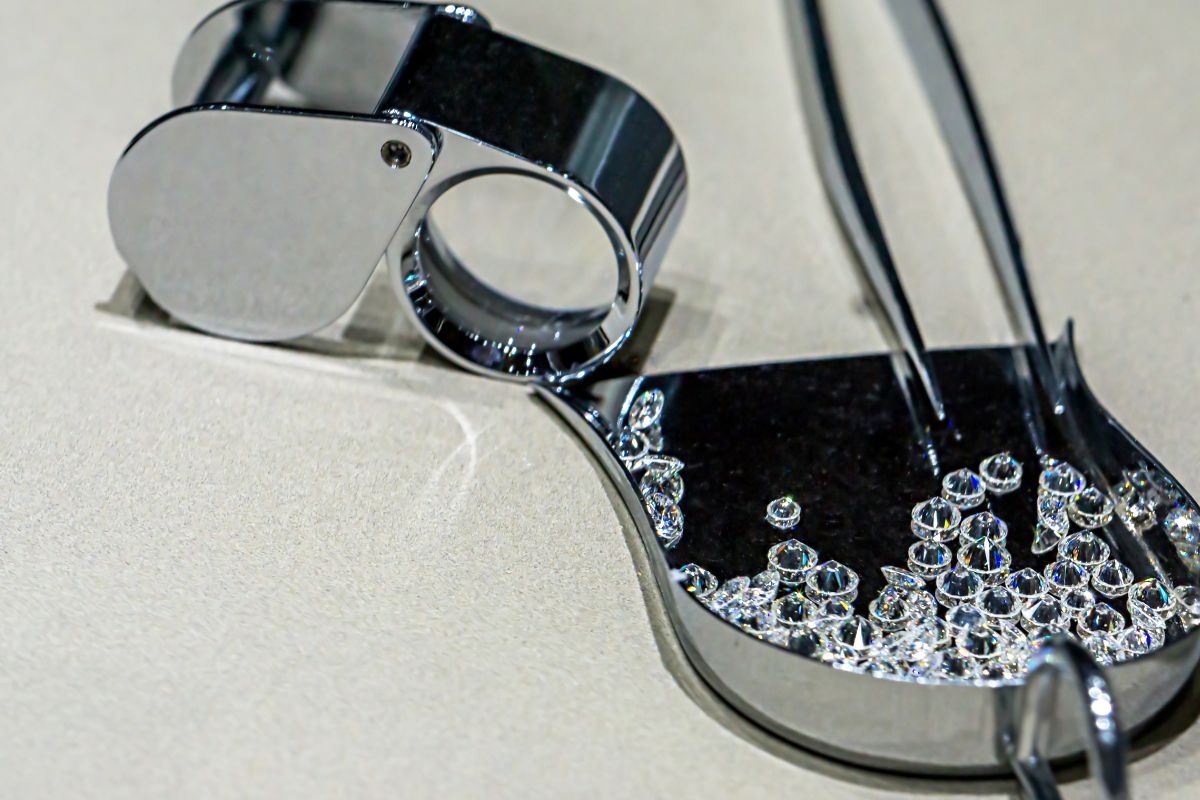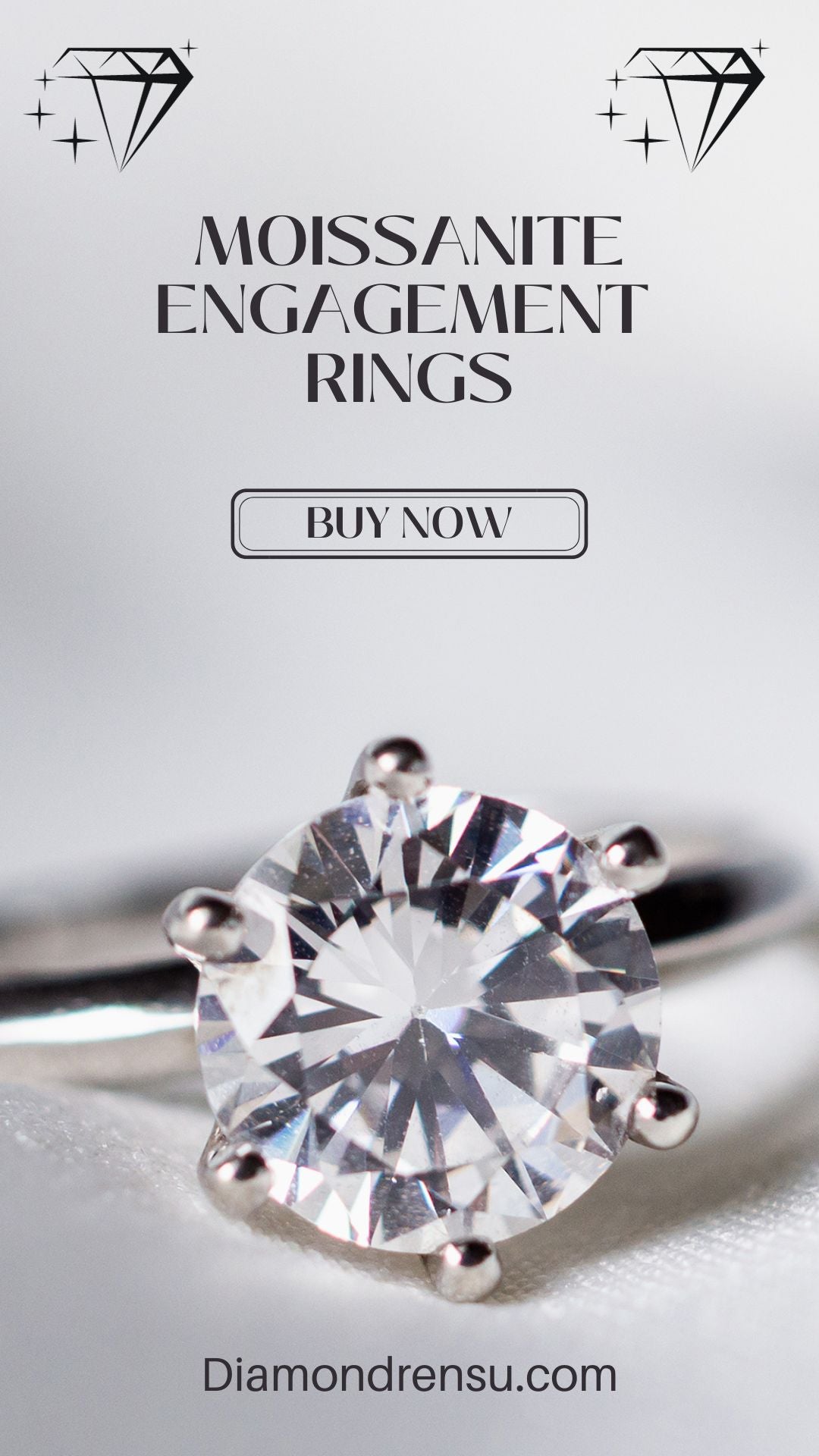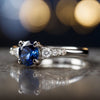
Gemstone Clarity Scale: Understanding Quality and Value
When you’re considering purchasing a gemstone, one of the fundamental aspects you’ll encounter is the clarity scale. Clarity refers to the absence of inclusions and blemishes in gemstones. These natural imperfections can range from microscopic to easily visible to the naked eye, and they significantly influence the value and beauty of a gemstone. Each type of gemstone has its own clarity standards due to their unique crystalline structures.
In the gemstone clarity scale, there are several grades which help you understand the level of inclusions in a gemstone. These grades include terms like "Internally Flawless" (IF), indicating no visible inclusions under a standard loupe with 10x magnification, to grades like "Included" (I1, I2, I3), where inclusions are visible and may affect the stone's durability. Understanding this system is crucial when you’re evaluating gems, whether you're interested in a luxurious diamond or a vibrant ruby.
Many factors must be considered with gemstone clarity, as some gems are expected to have some inclusions while others are prized for their purity. For example, the rarity of an inclusion-free emerald makes it extremely valuable. An expert analysis can provide you with the intricate details of a gemstone’s clarity, which is pivotal in determining its overall value and aesthetic appeal. If you're looking into a comprehensive gemstone analysis system considering clarity, it’s worth exploring recent developments in gemological technologies such as Gemo: An AI-Powered Approach. These advancements are transforming how experts and enthusiasts alike assess and appreciate the true quality of gemstones.
Detailed Considerations on Clarity
Understanding the clarity of a gemstone is essential as it affects both the stone's beauty and value. Here, you'll discover the fundamental clarity scales, how clarity is graded, the impact of inclusions, enhancement techniques, and how to evaluate clarity in diamonds and colored gemstones.
Clarity Scale Basics
Clarity is a measure of the internal and surface imperfections of gemstones, known as inclusions and blemishes, respectively. Transparent gems allow light to pass through without obstruction, while translucent stones permit light but with some diffusion. Opaque stones block light entirely.
Clarity Grading Systems
The most recognized grading system is provided by the Gemological Institute of America (GIA), which grades diamond clarity from Flawless (FL) to Included (I). Clarity grades denote the absence or presence of inclusions and are determined under 10x magnification.
Categories of Clarity
Gemstones fall into three types based on typical inclusions:
- Type 1: gems often without inclusions, like aquamarine.
- Type 2: gems typically included, like sapphire and ruby.
- Type 3: gems that are almost always included, like emerald.
Tools for Assessing Clarity

Jewelers use a loupe or microscope to examine clarity. A standard jeweler's loupe provides 10x magnification, essential for spotting minute inclusions that affect the overall clarity grade.
The Impact of Inclusions
Inclusions can impact a gemstone's value, quality, and durability. The size, number, position, and color of the inclusions matter. Eye-clean gems have no inclusions visible to the naked eye and are higher in value.
Clarity Enhancement Techniques
Treatments such as fracture filling and laser drilling improve the apparent clarity of a gemstone. It is vital to know when a gemstone has been treated, as it can affect the gemstone's value and durability.
Understanding Diamond Clarity
Diamonds are evaluated for clarity using a specific grade scale from Flawless (FL) to Included (I3). A Flawless diamond has no inclusions or blemishes, while an Internally Flawless (IF) diamond may have only minor surface blemishes.
Evaluating Colored Gemstone Clarity
Colored gemstones each have unique clarity characteristics, and clarity affects their value differently compared to diamonds. For instance, beryl gems such as emerald may be acceptable with inclusions, as they often occur naturally in these minerals.
Common Clarity Characteristics in Gems
Inclusions include features like crystals, fractures, and clouds, whereas blemishes refer to surface irregularities. Both types can contribute to the unique character of the gemstone, sometimes increasing its rarity or aesthetic appeal.
Advanced Topics in Clarity
Advanced clarity topics involve the study of how inclusions form and their impact on gemstone growth. Treatments that alter clarity and subsequent ethical implications are also critical considerations for jewelers and collectors.
Valuation and Clarity

Evaluating gemstones incorporates numerous factors, but clarity profoundly influences price and selection. Your understanding of clarity and its grading system is crucial when assessing a gemstone's quality and value.
Effects of Clarity on Gemstone Price
Clarity is a principle determinant in a gemstone's value. A Flawless (FL) or Internally Flawless (IF) rating signifies rarity and often commands top dollar. In contrast, gemstones graded as Very Slightly Included (VVS), Slightly Included (SI), or Included (I) reflect various internal imperfections, which can diminish their monetary worth. For instance, the clarity grade could affect price as follows:
- FL to IF: Highest prices due to being nearly or entirely free of inclusions.
- VVS1 to VVS2: Slightly lower due to minute inclusions difficult to see under magnification.
- VS1 to VS2: Moderate prices for minor inclusions visible with effort under magnification.
- SI1 to SI2: More affordable with inclusions easily observed under magnification.
- I1 to I3: Least expensive, inclusions are visible to the naked eye, affecting transparency and brilliance.
Clarity's Role in Gemstone Selection
Your selection criteria should always consider clarity as it affects the gemstone's appearance. Quality gemstones with high clarity grades tend to exhibit superior brilliance and are more aesthetically pleasing. Although size, cut, and color play significant roles, a high clarity grade often implies a gemstone of exceptional quality. When choosing a gemstone, be aware that the clarity grade is as important as carat weight, especially for investment pieces where long-term value is a consideration.
Clarity in Jewelry Context
Clarity is a pivotal factor in gemstone quality, affecting your jewel's transparency and brilliance. Choosing the right clarity for your piece is as important as its cut, informing both the beauty and durability of your jewelry.
Choosing The Right Clarity for Jewelry
When selecting a gemstone, you should consider clarity along with other attributes like color and cut. Clarity refers to the absence of inclusions and blemishes, and is graded on a scale. A gemstone's clarity can impact its brilliance, as light passes through it with fewer obstructions in more transparent stones.
- Flawless (FL): No inclusions or blemishes visible under 10x magnification.
- Internally Flawless (IF): No inclusions visible under 10x magnification.
- Very, Very Slightly Included (VVS1 and VVS2): Minute inclusions difficult for skilled graders to see under 10x magnification.
- Very Slightly Included (VS1 and VS2): Minor inclusions observed with effort under 10x magnification.
- Slightly Included (SI1 and SI2): Inclusions noticeable under 10x magnification.
- Included (I1, I2, and I3): Inclusions obvious under 10x magnification which may affect transparency and brilliance.
To balance cost and appearance, you might opt for a VS or SI grade, which typically appears clean to the naked eye yet is more affordable than higher-end grades.
Maintenance and Care for Clarity
To preserve the clarity of your gemstones, regular maintenance is key. Here are simple steps to keep your jewelry shining:
- Cleaning: Gently clean your jewelry with a soft, non-abrasive cloth and mild soap. Remember, harsh chemicals can damage the gemstone's surface.
- Professional Inspection: Have your jewelry inspected by a professional jeweler at least once a year to check for any damage to the gemstone or setting.
- Safe Storage: Store your jewelry in a fabric-lined case with dividers, or wrap each piece in a soft cloth to prevent scratches.
- Avoid Rough Conditions: Remove your jewelry when doing heavy work or exercising, as diamonds and other gemstones, despite their durability, can chip or become loose in their setting.
Remember, the better you care for your jewelry, the longer the clarity and radiance will remain intact, allowing you to enjoy its splendor for years to come.
Terminology and Standards

| Term | Description |
|---|---|
| Diamond Clarity | Refers to the presence or absence of internal flaws (inclusions) and surface blemishes (blemishes) in a diamond. Clarity is one of the 4Cs used to evaluate a diamond's quality. |
| Inclusions | Internal flaws or imperfections within a diamond. Inclusions can include crystals, feathers, clouds, or other natural features formed during the diamond's growth process. |
| Blemishes | Surface imperfections on a diamond. Blemishes can include scratches, nicks, pits, or other external marks that affect the diamond's clarity. |
| Flawless (FL) | No inclusions or blemishes visible under 10x magnification. Extremely rare and considered the highest clarity grade. |
| Internally Flawless (IF) | No inclusions visible under 10x magnification. Some minor surface blemishes may be present but do not affect clarity. Very rare and highly valued. |
| VVS1, VVS2 (Very, Very Slightly Included) | Minute inclusions that are difficult to detect under 10x magnification. VVS diamonds have very high clarity and are considered excellent quality. |
| VS1, VS2 (Very Slightly Included) | Minor inclusions that are visible under 10x magnification but are typically not visible to the naked eye. VS diamonds offer excellent value with good clarity. |
| SI1, SI2 (Slightly Included) | Noticeable inclusions under 10x magnification. SI diamonds may have inclusions that are visible to the naked eye, but often considered a good balance between quality and value. |
| I1, I2, I3 (Included) | Inclusions that are visible to the naked eye. I diamonds may have significant inclusions affecting both appearance and durability. Generally considered lower in quality. |
| Eye-Clean | A term used to describe diamonds with inclusions that are not visible to the naked eye. Eye-clean diamonds may fall into the VS and SI clarity grades. |
| Loupe Clean | A term indicating that a diamond is free of visible inclusions when examined under a jeweler's loupe (magnifying tool). |
Understanding the terminology and standards used in gemstone clarity grading is crucial for appreciating the value and quality of a gemstone. This section will furnish you with a comprehension of key clarity terms and the nomenclature used within the industry.
Key Clarity Terminology
When you examine a gemstone, clarity is a key characteristic that defines its aesthetic appeal and value. Clarity refers to the absence of inclusions or blemishes. Here are some pivotal clarity grades you should be familiar with:
- FL (Flawless): No inclusions or blemishes visible under 10x magnification.
- IF (Internally Flawless): No inclusions and only insignificant surface blemishes visible under 10x magnification.
- VVS (Very Very Slightly Included): Minuscule inclusions that are difficult for a skilled grader to see under 10x magnification.
- VS (Very Slightly Included): Minor inclusions that are clearly visible under 10x magnification but can be characterized as minor.
- SI (Slightly Included): Noticeable inclusions that are easy to observe under 10x magnification.
- I1, I2, I3 (Included): Inclusions that are obvious under 10x magnification and may affect transparency and brilliance.
Terms such as "eye clean" suggest that no inclusions are visible to the naked eye, whereas "loupe clean" implies no inclusions are visible under 10x magnification.
Industry Standards and Nomenclature
The gemstone industry relies on established standards to ensure consistent and accurate grading. The Gemological Institute of America (GIA) is a key entity that established a standardized grading system known as the Four Cs - Carat, Cut, Color, and Clarity. Clarity grading is a meticulous process, where each gemstone is examined under magnification to determine its clarity grade.
- Grades: GIA's clarity grading scale includes the following: Flawless (FL), Internally Flawless (IF), Very Very Slightly Included (VVS1 and VVS2), Very Slightly Included (VS1 and VS2), Slightly Included (SI1 and SI2), and Included (I1, I2, and I3).
- Clarity Standards: These standards allow you, the buyer, to make informed decisions and directly compare the clarity of gemstones from different sellers.
Remember, the aforementioned clarity grades form part of the widely accepted clarity standards within the gemstone industry, and understanding these will aid you in assessing the quality of the gemstone you are considering.
Frequently Asked Questions
The clarity of a gemstone significantly impacts its value. Here, you'll find precise answers to common questions related to gemstone clarity and grading.
What determines the clarity grade of a gemstone?
The clarity grade is determined by the number, size, location, and visibility of internal features called inclusions, as well as external imperfections known as blemishes.
How does the GIA clarity scale apply to colored gemstones?
The GIA clarity scale, initially developed for diamonds, is also used for colored gemstones, adjusting expectations for clarity based on the typical inclusions seen in those stone types.
What does 'eye clean' mean in the context of gemstone clarity?
'Eye clean' is a term that describes a gemstone with no inclusions visible to the naked eye, typically viewed by an observer at 6-12 inches away from the stone.
Can you explain the difference between Type 1 and Type 2 gemstones regarding clarity?
Type 1 gemstones are often virtually inclusion-free, whereas Type 2 gemstones typically contain inclusions that are visible to the naked eye.
What does 'AAA quality' signify when grading the clarity of a gemstone?
'AAA quality' refers to a high clarity grade just below the top-tier 'AAAA' or 'Flawless' grades, indicating very minor inclusions that are difficult to see with the naked eye.
What is considered the highest clarity grade for colored gemstones?
For colored gemstones, the highest clarity grade is 'Flawless,' indicating that there are no inclusions or blemishes visible under a standard 10x magnification.
Checkout some of our top collections:










